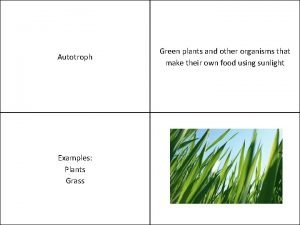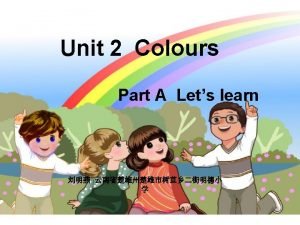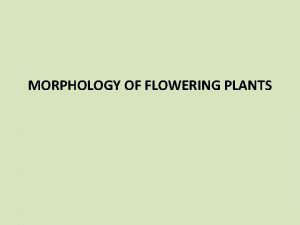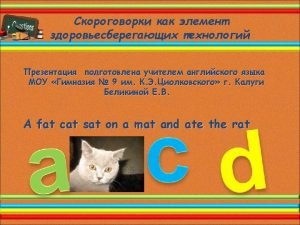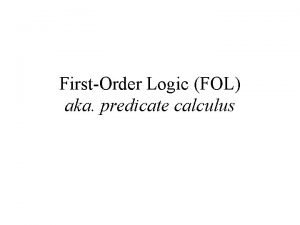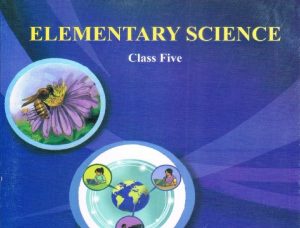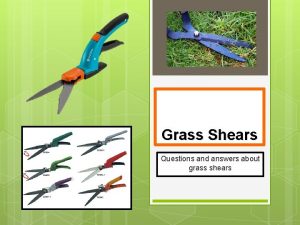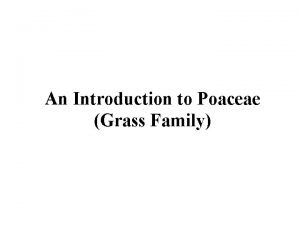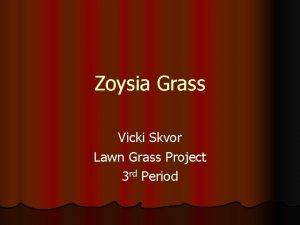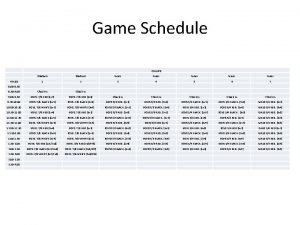Autotroph Examples Plants Grass Green plants and other














- Slides: 14

Autotroph Examples: Plants Grass Green plants and other organisms that make their own food using sunlight

Heterotroph Examples: Bugs, mice, birds, raccoons, foxes, bears, people Organisms that eat other organisms to get energy

Producer Examples: Green Plants Grasses Another name for Autotrophs Green plants and other organisms that make their own food using sunlight

Primary Consumer Examples of Primary Consumers are: Bugs Rabbits Deer Cows Sheep Consumer is another name for Heterotroph. Primary Consumers are the first step up from producers in a food chain. These organisms eat plants and grass.

Secondary Consumer Examples: Snakes and other Reptiles Owls, skunks and raccoons Larger Fish The third step on a food pyramid. These organisms eat primary consumers.

Tertiary Consumer Examples: Lions Bears Large Birds Very Large Fish Often the top level of the food pyramid The third level, or one step up from secondary consumers. These organisms eat other organisms for energy.

Herbivore Examples: Plants Grass Another word for Autotrophs Green plants and other organisms that make their own food using sunlight

Omnivore Examples: Raccoons Bears People A kind of heterotroph that eats meat and plants

Carnivore Examples: Fox Eagle Lions A kind of heterotroph that eats meat

Decomposer Examples: Mushrooms Bacteria Worms A kind of heterotroph that eats dead plants and dead animals and animals’ waste (poop)

Trophic Level Examples: Producers Primary Consumers Secondary Consumers Tertiary Consumers A level or tier on the food chain or pyramid

Biomass The mass is highest at the producer level and lowest at the tertiary level of the pyramid. The total mass of living matter at each trophic level in a food pyramid.

Limiting Factor Examples: If there are too many predators that eat the same thing, there wont be enough food. If a fire burns a forest, it will limit the population that lives there. A factor that limits the size of an organism’s population. Factors can be biotic or abiotic/density dependent or density independent.

Carrying Capacity Carrying capacity is limited by the energy, water, oxygen and nutrients available. The largest population of a particular organism that a given environment can support without harmful effects.
 Is grass heterotroph
Is grass heterotroph A narrow gloomy cave
A narrow gloomy cave Green green green red
Green green green red In some plants like grass monstera and banyan tree
In some plants like grass monstera and banyan tree An explicit detail is a
An explicit detail is a Jump rope songs cinderella
Jump rope songs cinderella Literal examples
Literal examples Always green grass
Always green grass Project green grass
Project green grass He that hatches matches hatches catches
He that hatches matches hatches catches Jeannie kirby i wonder
Jeannie kirby i wonder In the fol sentence color(grass, green), color is
In the fol sentence color(grass, green), color is Difference between autotroph and heterotroph
Difference between autotroph and heterotroph Why plants and animals depend on each other
Why plants and animals depend on each other Flowering and non flowering plants similarities
Flowering and non flowering plants similarities
